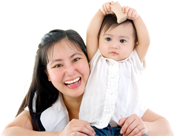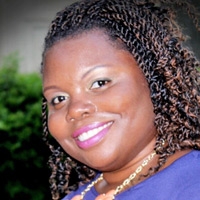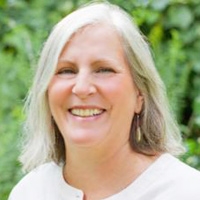 Online Continuing Education (CE) Library
Online Continuing Education (CE) Library
Welcome to the GOLD Learning Library! Enjoy evidence-based continuing education (CE) in a convenient, online format. These pre-recorded presentations are available on-demand 24/7 for a period of time as designated. Presentations are available as an individual lecture or as a bundled pack. We are offering a variety of accreditation for our lectures, including CERPs, CMEs, Nurse Contact Hours, Midwifery CEUs, ACM CPD Endorsement Hours, ACNM CEUs and others.
To begin viewing, please select the desired presentation(s) and add to your cart. Immediately after checkout, your viewing time starts and you will have access to these presentations. Please contact us if you have any questions. Enjoy!

Mastering Lactation Conversations: Creating Successful and Achievable Care Plans
In celebration of IBCLC Day 2024, GOLD Learning is excited to welcome Johanna Sargeant BA, BEd, IBCLC as she shares her presentation titled "Mastering Lactation Conversations: Creating Successful and ...
Johanna Sargeant, BA, BEd, IBCLC
Mastering Lactation Conversations: Creating Successful and Achievable Care Plans
Presentations: 1 |
Hours / CE Credits: 1 (details) |
Viewing Time: 4 Weeks |
Added: 16/10/2023
CERP: 1
L-CERP: 1
L-CERP: 1
Lactation
75 CERPs IBCLC Recertification Education Bundle
Your IBCLC Recertification CERPs All in One Easy Step!
Your 75 CERP Bundle Includes:
74 Presentations by 69 Speakers
Covers your IBCLC Recertification by CERP Requirements including all 70 L-C...
Kelly McGlothen-Bell, PhD, RN, IBCLC
Empowering Breastfeeding in Women Receiving Medication-Assisted Treatment for Opioid Use Disorder: A Call for Policy Change
Wendy Jones, PhD, MRPharmS
Pharmacokinetics and Clinical Implications of Drugs in Human Milk: The Substance-Exposed Infant
Catherine Watson Genna, BS, IBCLC
Introduction to Cervical Auscultation
Jada Wright Nichols, MS, OTR/L
Disorganized Infant Feeding: Beyond Suck, Swallow, Breathe
Mariana Colmenares Castaño, MD, IBCLC
Breastfeeding with Insufficient Glandular Tissue
Annie Frisbie, MA, IBCLC
The Ethics of Digital Privacy and Lactation Practice
Paulina Erices, MS, IBCLC, IMH-E (r)
Nursing A Preemie, Perspectives For Lactation Supporters and Professionals
Philip Anderson, Pharm.D.
Medication Use During Breastfeeding
Divya S. Parikh, MD, IBCLC
When Supply is Greater than Demand: Maternal Hyperlactation Syndrome
Ted Greiner, PhD (International Nutrition)
Alcohol Consumption During Lactation
Sharon L. Unger, MD, FRCP(C)
The Use of Human Donor Milk in the High Risk Neonate
Rebecca L.R. Powell, PhD, CLC
Virus Killing by White Blood Cells in Breast Milk: How Breastfeeding Is Protective Against HIV
Juanita Jauer Steichen, MA, IBCLC
What’s New With the International Code on the Marketing of Breast Milk Substitutes: It’s Not Just About Formula!
Duncan Fisher, OBE
How To Enhance Breastfeeding A Lot: Engage Fathers
Nikki Hunter Greenaway, MSN FNP, IBCLC
The Effects of Breastfeeding on Sexual Intimacy
Identifying Musculoskeletal Issues That Impact Breastfeeding
Lucy Ruddle, IBCLC
Relactation - A Supportive Approach
Robinson Reed, MSN, CNM, ARNP, IBCLC
Queer Milk: Inclusive Lactation Care for LGBTQ Families
Bryna Hayden, IBCLC
Breastfeeding With Ease: The Impact of Infant Reflex Emergence and Integration
Angela Lober, PhD, RNC, IBCLC
Assisting Late Preterm Dyads Achieve Breastfeeding/Chestfeeding Success
Ellen Lechtenberg, MPH, RD, IBCLC
Neurologic Conditions and The Breastfed Infant
Heather Miller, RN (Disability), Cert IV in Breastfeeding Education (Community)
Yes You Can! Breastfeeding A Baby With Down Syndrome
Laurel A. Wilson, IBCLC, RLC, INHC, CLSP, CLE, BSc
Can a Baby Be Allergic to Breastmilk?: Sensitivities, Allergies, Galactosemia, and Lactose Intolerance
Lyndsey Hookway, BSc, RNC, HV, IBCLC
Breastfeeding Children with Cancer
Mariana Colmenares Castaño, MD, IBCLC
Breastfeeding The Baby With Congenital Heart Disease
Mariana Colmenares Castaño, MD, IBCLC
Antenatal Breastmilk Expression: Setting Families Up For Success
Divya S. Parikh, MD, IBCLC
Update On The Evaluation And Management Of Low Milk Supply
Andrea Herron, RN, MN, CPNP, IBCLC
The Relationship Between Parent/Infant Synchrony, Breastfeeding Success and Infant Cues
Rachel Dean, MPH, RDN, LDN, IBCLC, RLC
Motivational Interviewing in the Early Days of Feeding
Anna Le Grange, BSc, RN, IBCLC
A Mindful Approach to Low Milk Supply
Leslie R. Kowalski, PhD, IBCLC
Untangling the Big Picture of Tongue-Tie Assessment
Shondra Mattos, IBCLC
Bryna Hayden, IBCLC
Back to Baseline: Normal Anatomy & Physiology of Infant Feeding
Shacchee Khare Baweja, MBBS, DCH, IYCF, IBCLC
Skilled Lactation Support in Suboptimal and Low Resource Settings: Onsite Mentoring as a Game Changer
Alyssa Schnell, MS, IBCLC
ReLATCHtation: Transitioning the Exclusively Bottle-fed Baby to Nursing
Diane DiTomasso, IBCLC, PhD, RN
Expected Weight Changes After Birth for Full-Term, Breastfed Newborns
Johanna Sargeant, BA, BEd, IBCLC
At-Breast Supplementation: Practical Tips for Using a Variety of Supplemental Feeding Tube Devices
Divya S. Parikh, MD IBCLC
Rachel Walker, PhD
Breastmilk Fat Profile: Implications for Clinical Practice
Marie Zahorick, APRN, MS, FNP-C, IBCLC
Medications and Mothers' Minds: Psychopharmacology for Lactating Mothers
Wendy Ingman, BSc (Hons) PhD (Medicine)
The Biology of the Mammary Gland in Lactation
Smaranda Nay, MD, IBCLC
Talking to Babies: Basic Communication Skills for Lactating Parents and Healthcare Specialists
Jarold “Tom” Johnston Jr., CNM, IBCLC
Using Evidence to Develop Clinical Lactation Skills
Nastassia Harris, DNP(c), MSN, RNC-MNN, IBCLC
When It's Time to Let Go... Stories of Weaning
Michal Ann Young, M.D., FAAP, FABM
Immunology of Human Milk - the Magic Ingredient
Robin Kaplan, M.Ed, IBCLC
Overcoming Challenges When Providing Virtual Support to Breast/Chestfeeding Families
Kathryn Stagg, IBCLC
Breastfeeding Twins and Triplets: Supporting Families During Their Breastfeeding Journey
Annette Leary, RN,BSN,IBCLC
Interactive Case Review: Prioritization of Care
Liz Brooks, JD, IBCLC, FILCA
Using a Cool Head When You’re on the Hot Seat: Ethical and Legal Topics That Make Us Sweat, and How to Avoid Getting Burned
Alison K. Hazelbaker, PhD, IBCLC, FILCA, CST, RCST, PPNE
An Introduction to Structural Causes of Deep Breast Pain and Milk Stasis: Subluxations and Myofascial Trigger Points
Camila Palma, DDS, MSc (Master in Pediatric Dentistry) & IBCLC
Ankyloglossia Differential Diagnosis: Tongue-Tie, Retrognathia or Hypotonia?
Luke Grzeskowiak, PhD, BPharm(Hons), GCertClinEpid, AdvPracPharm, FSHP
An Evidence-Based Guide to Using Domperidone as a Galactagogue
Anya Kleinman, MD, IBCLC
Building Bridges: Early IBCLC Recognition and Triage of Common and Life-Threatening Newborn and Maternal Pathology
Bianca Balassiano, IBCLC
Lactation After Bariatric Surgery: Physiological, Hormonal and Psychological Implications
Emma Pickett, IBCLC
Working With Families Feeding Beyond 12 Months: Offering Support With Confidence
Gretchen Becker Crabb, MSE, LPC, OTR/L, CLC, IMH-E®
Vestibular Processing: Using the Sixth Sense to Support Lactation and Parent/Infant Relationships
Indira López-Bassols, IBCLC, MSc, MPhil/PhD student
Assisted Nursing: Supporting Breastfeeding Infants With Craniofacial Anomalies
Jeanette Mesite Frem, MHS, IBCLC, RLC, CCE
Fitting Flanges for Pumping: Rethinking Sizes and Materials
Katherine Carroll, PhD, BPhysiotherapy, BA (Hons)
Providing Enhanced Lactation Care for Families Following Late Miscarriage, Stillbirth, Neonatal and Infant Death
Kristin Cavuto, MSW, LCSW, IBCLC
Eating Disorders in the Perinatal Client: A Trauma Informed Model
Megan Dunn, BS, IBCLC
Microbiome Support for the Breast/Chestfeeding Dyad
Melissa Cole, MS, IBCLC
Low Milk Production Detective Work: Assessment and Care Plan Considerations
Monica Esparza, CLC, Community Interpreter
Increasing Lactation Support Through Community Partnerships
Rebecca Costello, IBCLC, MPH
Leveling up Your Note Taking
Rosann Edwards, RN, MScN, IBCLC, PhD
Supporting Older First-Time Mothers with Breastfeeding and Becoming a Mother: Insights for Clinical Practice
Zainab Yate, BSc, MSc, Author
Research Ethics & Infant Feeding: How to Utilise the Four 'D's of a Brief Assessment
Christine Staricka, BS, IBCLC, RLC, CLSP, CE, FILCA
Your Responsibility to the WHO Code: Evaluating Real-World Scenarios for Compliance
Anna Le Grange, BSc, RN, IBCLC
Breast/Chestfeeding After Breast Reduction
Mary Ryngaert, MSN APRN IBCLC
Case Studies of Poor Weight Gain in Breastfed Infants
Shel Banks, IBCLC
Care Plan Development for Weight Concerns in the Breastfed Infant: A Family Centred Approach
Lyndsey Hookway, BSc, RNC, HV, IBCLC
Supporting Families With Sleep While Optimising Attachment and Responsive Feeding
Alyssa Schnell, MS, IBCLC
Supplementation: A Goldilocks Dilemma
Carmela Kika Baeza, MD, IBCLC
An Ecosystemic Approach to the Clinical Management of Breast and Nipple Pain
Allison Tolman, LPN, IBCLC, ICCE
Understanding Breast Pumps: The Science vs the Practical
Annette Leary, RN,BSN,IBCLC
Where to Start: Creating a Lactation Care Plan for Complex Breastfeeding Cases
Presentations: 74 |
Hours / CE Credits: 75 (details) |
Viewing Time: 52 Weeks |
Added: 29/08/2023
CERP: 75
L-CERP: 70
E-CERP: 5
L-CERP: 70
E-CERP: 5

Lactation
GOLD Learning Day: Elevating Our Expertise on Lactation Physiology and Endocrinology
Having a thorough understanding of the physiology and endocrinology related to human lactation is crucial for health care professionals supporting clients with breast/chestfeeding challenges. As we ki...
Tamara Drenttel Brand, MA, MPH
Mast Cell Diseases and Lactation Care in the Post-Covid Era
More Than Just the Milk-Making Hormone! The Latest on Prolactin and Its Impact on Pregnancy and Lactation
Alyssa Schnell, MS, IBCLC
Demystifying Inducing Lactation: How Lactation Happens Without Pregnancy and Birth
Presentations: 3 |
Hours / CE Credits: 3 (details) |
Viewing Time: 6 Weeks |
Added: 17/08/2023
CERP: 3
Nurse Contact Hour(s): 3
CME: 3
L-CERP: 3
Nurse Contact Hour(s): 3
CME: 3
L-CERP: 3
GOLD Learning Symposium Series, Midwifery Bridge CEUs
GOLD Learning Labour & Delivery Online Symposium 2023
The GOLD Learning Labour & Delivery Online Symposium provides the latest evidence-based continuing education for health care professionals working with birthing families. Research tells us that health...
Jenny Blyth, Independent Birth Educator & Bodyworker
Hand Jiggling the Pelvis in Birth: Creating Space & Improving Labour Progress
Britta Bushnell, PhD
Archetypes of Power: Navigating Dynamics of the Labor Room
Maggie Runyon, MSN, RNC-OB, C-EFM
Not Handmaiden or Hero: The Impact of Nursing Identity on Nurse-Patient Relationship and Care
Karen H. Strange, CPM, AAP/NRP Instructor, CKC
The Remarkable Transition From Liquid to Air at Birth: The Implications for Neonatal Resuscitation
LaShea Haynes, MEd, MSN, APRN, AGCNS-BC, RNC-OB, C-EFM
Sharpening Your Knowledge of Fetal Heart Monitoring Concepts
Mandy Irby, BSN, RNC-OB, C-EFM, LCCE
Stirrups Are Restraints: 5 Simple Steps to Overcome Barriers to Upright Pushing
Jennifer Jo Averill Moffitt, RN, CNM, MBCPTc
Only Now, Just This - Practicing Mindfulness in Labor and Delivery
Identification and Management of Fear of Childbirth
Presentations: 8 |
Hours / CE Credits: 8 (details) |
Viewing Time: 8 Weeks |
Added: 20/04/2023
CERP: 7
R-CERP: 7
Nurse Contact Hour(s): 8
CME: 8
Midwifery CEU: 0.8
ACM CPD Hours: 8
ACNM: 6
R-CERP: 7
Nurse Contact Hour(s): 8
CME: 8
Midwifery CEU: 0.8
ACM CPD Hours: 8
ACNM: 6

Pharmacology & Toxicology for IBCLCs - 5 CERPs - Pack 1
Do you need to expand your understanding in IV. Pharmacology and Toxicology as specified by the IBCLC Detailed Content Outline? If your personalized Professional Development Plan (PPDP) has indicated ...
Ted Greiner, PhD (International Nutrition)
Alcohol Consumption During Lactation
Sekeita Lewis-Johnson, BSN, RN, IBCLC, DNPc
Marijuana and Breastfeeding: A Second Look, A Better Approach
Wendy Jones, PhD, MRPharmS
Pharmacokinetics and Clinical Implications of Drugs in Human Milk: The Substance-Exposed Infant
Amber Valentine, MS, CCC-SLP, BCS-S, IBCLC, CNT
Breastfeeding and Neonatal Abstinence Syndrome
Kelly McGlothen-Bell, PhD, RN, IBCLC
Empowering Breastfeeding in Women Receiving Medication-Assisted Treatment for Opioid Use Disorder: A Call for Policy Change
Presentations: 5 |
Hours / CE Credits: 5 (details) |
Viewing Time: 6 Weeks |
Added: 12/04/2023
CERP: 5
L-CERP: 5
L-CERP: 5

Pathology Lecture Package for IBCLCs - 5 CERPs - Pack 1
If you're seeking to deepen your understanding of III. Pathology according to the IBCLC Detailed Content Outline and fulfill the needs identified in your personalized Professional Development Plan (PP...
Hope K. Lima, PhD, RDN, LRD, IBCLC
Karin I. Evans, MA, RD, LDN, CHES
Lactation Support for Parents with Anorexia Nervosa
Rebecca L.R. Powell, PhD, CLC
Virus Killing by White Blood Cells in Breast Milk: How Breastfeeding Is Protective Against HIV
Carmela Kika Baeza, MD, IBCLC
Assessment and Management of Mastitis
Alison K. Hazelbaker, PhD, IBCLC, FILCA, CST, RCST, PPNE
An Introduction to Structural Causes of Deep Breast Pain and Milk Stasis: Subluxations and Myofascial Trigger Points
Presentations: 5 |
Hours / CE Credits: 5 (details) |
Viewing Time: 6 Weeks |
Added: 12/04/2023
CERP: 5
L-CERP: 5
L-CERP: 5

Physiology & Endocrinology for IBCLCs - 3 CERPs
If you're seeking to broaden your understanding in II. Physiology and Endocrinology, according to the IBCLC Detailed Content Outline, and your personalized Professional Development Plan (PPDP) has ide...
Mariana Colmenares Castaño, MD, IBCLC
Breastfeeding with Insufficient Glandular Tissue
Lucy Ruddle, IBCLC
Relactation - A Supportive Approach
Briana Tillman, IBCLC, M. Ed, OMS-III
Nicholas Sloan, BSME, OMS-III
What a Letdown: Exploring the Physiology of the Milk Ejection Reflex
Presentations: 3 |
Hours / CE Credits: 3 (details) |
Viewing Time: 4 Weeks |
Added: 11/04/2023
CERP: 3
L-CERP: 3
L-CERP: 3

Spotlight on Alison Hazelbaker
Introducing our speaker spotlight package featuring Dr. Alison K. Hazelbaker, a renowned cross-disciplinary therapist with over 30 years of experience in treating infant-sucking issues caused by stru...
Alison K. Hazelbaker, PhD, IBCLC, FILCA, CST, RCST, PPNE
An Introduction to Structural Causes of Deep Breast Pain and Milk Stasis: Subluxations and Myofascial Trigger Points
Alison K. Hazelbaker, PhD, IBCLC, FILCA, CST, RCST, PPNE
Creating Flow: Using Lymphatic Drainage Therapy for Breastfeeding Issues
Alison K. Hazelbaker, PhD, IBCLC, FILCA, CST, RCST, PPNE
Finger Feeding: What Do We Know? What Should We Know?
Alison K. Hazelbaker, PhD, IBCLC, FILCA, CST, RCST, PPNE
Infant Trauma: Impact on Breastfeeding
Alison K. Hazelbaker, PhD, IBCLC, FILCA, CST, RCST, PPNE
The Impact of Bodywork on Infant Breastfeeding
Presentations: 5 |
Hours / CE Credits: 5 (details) |
Viewing Time: 4 Weeks |
Added: 11/05/2023
CERP: 5
L-CERP: 5
L-CERP: 5

Spotlight on Catherine Watson Genna
This speaker spotlight lecture package features some of Catherine Watson Genna's most popular presentations on breastfeeding, all available in one convenient package. Catherine is an experienced IBC...
Catherine Watson Genna, BS, IBCLC
Introduction to Cervical Auscultation
Catherine Watson Genna, BS, IBCLC
Ultrasound Analysis of Sucking: Tongue-Tie and Confounders
Catherine Watson Genna, BS, IBCLC
Critical Assessment of Apparent Tongue-Tie
Catherine Watson Genna, BS, IBCLC
Using Breastfeeding Supplementers
Catherine Watson Genna, BS, IBCLC
Positioning and Latch for Breastfeeding
Catherine Watson Genna, BS, IBCLC
Breastfeeding Strategies for Tongue-tied Infants
Catherine Watson Genna, BS, IBCLC
Lactation Support for Infant Biomedical Challenges
Catherine Watson Genna, BS, IBCLC
Breastfeeding Management - Interactive Case Studies
Presentations: 8 |
Hours / CE Credits: 8 (details) |
Viewing Time: 6 Weeks |
Added: 01/06/2023
CERP: 8
L-CERP: 8
L-CERP: 8

Spotlight on Barbara Robertson
GOLD Learning is thrilled about our brand new series of lecture packages, with a particular focus on highlighting distinguished speakers.
Explore the expertise of Barbara Robertson BA, MA, IBCLC...
Barbara Robertson, MA, IBCLC, LLL
Clinical Assessment and Management of Low Milk Production
Barbara Robertson, MA, IBCLC, LLL
The Baby's Not Gaining Weight! Now What?
Barbara Robertson, MA, IBCLC, LLL
The Great Nipple Shield Debate
Barbara Robertson, MA, IBCLC, LLL
Breastfeeding by the Numbers: What do They Mean and When are They Useful?
Barbara Robertson, MA, IBCLC, LLL
Breastfeeding: Baby’s First Milestone
Presentations: 5 |
Hours / CE Credits: 5 (details) |
Viewing Time: 4 Weeks |
Added: 27/04/2023
CERP: 5
L-CERP: 5
L-CERP: 5
-(1)_90x90.jpg)
Midwifery
Vaginal Birth - Introduction to SUCCESS Principles for Hands-on Perineal Protection
In this course, you will learn the principles of SUCCESS: Perineal protection during vaginal birth. The material is developed in collaboration with clinicians from Oslo University Hospital Ullevål in...
Vaginal Birth - Introduction to SUCCESS Principles for Hands-on Perineal Protection
Presentations: 1 |
Hours / CE Credits: 1 (details) |
Viewing Time: 2 Weeks |
Added: Sept 6, 2022
ACM CPD Hours: 1
Midwifery CEU: 0.1
Midwifery CEU: 0.1

Midwifery
Essential Oils for Maternal Wellness Lecture Pack
Essential Oils for Maternal Wellness Lecture Package is a complete online training course developed for birth professionals who would like to learn how to safely and effectively apply essential oils d...
Stephanie McBride, BA-Certified Clinical Herbalist, Certified Aromatherapist,Functional Nutritionist
Module 1: Fundamentals
Stephanie McBride, BA-Certified Clinical Herbalist, Certified Aromatherapist,Functional Nutritionist
Module 2: Applications and Dosing
Stephanie McBride, BA-Certified Clinical Herbalist, Certified Aromatherapist,Functional Nutritionist
Module 3: Safety in Maternity
Stephanie McBride, BA-Certified Clinical Herbalist, Certified Aromatherapist,Functional Nutritionist
Module 4: Use in Pregnancy
Stephanie McBride, BA-Certified Clinical Herbalist, Certified Aromatherapist,Functional Nutritionist
Module 5: Use in Labor
Stephanie McBride, BA-Certified Clinical Herbalist, Certified Aromatherapist,Functional Nutritionist
Module 6: Use in Postpartum
Stephanie McBride, BA-Certified Clinical Herbalist, Certified Aromatherapist,Functional Nutritionist
Module 7: Use in Infant Care
Stephanie McBride, BA-Certified Clinical Herbalist, Certified Aromatherapist,Functional Nutritionist
Module 8: Materia Aromatica
Stephanie McBride, BA-Certified Clinical Herbalist, Certified Aromatherapist,Functional Nutritionist
Module 9: Putting Aromatherapy into Practice
Presentations: 9 |
Hours / CE Credits: 6 (details) |
Viewing Time: 4 Weeks |
Added: 15/12/2021
Midwifery CEU: 0.6

Lactation Ethics (E-CERPs)
Clinical Ethics for Lactation Professionals
This lecture series provides the latest thought provoking information from prominent experts in the field of lactation ethics. Jessica Lee, Kathy O'Grady Venter, Lisa Amir, Indra Wood Lusero and Pau...
Jessica Lee, J.D.
Lactation and Work: Ethically Guiding Clients Through Workplace Barriers
Kathy O'Grady Venter, RN, IBCLC
Case Studies: Considering Clinical Issues and Ethical Undertones
Lisa Amir, MBBS, MMed, PhD, IBCLC
Ethical Issues in the Use of Medications During Lactation
Pauline Sakamoto, MS, RN, PHN
Ethical Issues in Milk Sharing and Milk Banking
Indra Wood Lusero, MA, JD
Human Rights During Birth and Lactation: Health Care Providers as Human Rights Defenders
Presentations: 5 |
Hours / CE Credits: 5 (details) |
Viewing Time: 6 Weeks |
Added: June 1, 2021
CERP: 5
E-CERP: 5
E-CERP: 5
Lactation, GOLD Learning Symposium Series
GOLD Learning Tongue-Tie Online Symposium 2023
Caring for a family with a tongue-tied baby requires specialized knowledge and skills. Join us at the GOLD Learning Online Tongue-Tie Symposium 2023 to refine your fundamental skills by learning abo...
Effath Yasmin, MA, HDSE, CLEC(USA), IBCLC, BCST (ICSB, SWISS), RCST
Post Frenotomy Wound Management and Bodily Autonomy
Sharon Smart, PhD, BSc, PGCert Higher Education Innovative Learning, CPSP, FHEA
The Impact of Tongue-Tie on Swallowing and the Implications for Breastfeeding and Starting Solids
Eugenia (Gina) Nigro, BBA, IBCLC
Building a Clinical Tongue-Tie Care Plan Families Can Work With
Shana Quarrie, MSOT, OTR/L, IBCLC, C/NDT
Annette Leary, RN, BSN, IBCLC
The Untethered Method Integrated: Team Approach to Assessment and Oral Habilitation
Adrienne Guirguis, IBCLC, CSOM
Navigating the Challenges of Tongue-Tie: Counseling and Anticipatory Guidance
Melissa Cole, MS, IBCLC
Feeding is Movement: Activities for Supporting Optimal Infant Oral Function
Justin Roche, MB ChB, FRCPCH, FRCPI, IBCLC
Beneath the Surface: Anatomy and Physiology and How These Influence the Approach to Frenectomy
Sharon A. Vallone, DC, FICCP
Wondering about “The Wanderer?” The Vagus and Ankyloglossia
Kathy Parkes, MSN-Ed, BSPsy, RN, IBCLC, RLC, FILCA
Complex Cases of Tongue-tied Babies: What Do We Tackle First?
Ramya Kumar, MS.CCC-SLP, BCSS, CNT, IBCLC, NTMTC
Trauma Informed and Family Centered Care! Keeping the Family Unit at the Center of a Tongue-Tie Treatment Model
Presentations: 10 |
Hours / CE Credits: 10 (details) |
Viewing Time: 8 Weeks |
Added: 17/04/2023
CERP: 10
L-CERP: 10
CME: 10
Dietetics CEU: 10
L-CERP: 10
CME: 10
Dietetics CEU: 10
Lactation, GOLD Learning Symposium Series
GOLD Learning Tongue-Tie Online Symposium 2023 - Day 1 Fundamental Skills
The Day 1 Lecture Pack of the GOLD Learning Tongue-Tie Online Symposium 2023 focuses on Fundamental Skills! Refine your fundamental skills by learning about how to assess for tongue-tie and identify ...
Effath Yasmin, MA, HDSE, CLEC(USA), IBCLC, BCST (ICSB, SWISS), RCST
Post Frenotomy Wound Management and Bodily Autonomy
Eugenia (Gina) Nigro, BBA, IBCLC
Building a Clinical Tongue-Tie Care Plan Families Can Work With
Shana Quarrie, MSOT, OTR/L, IBCLC, C/NDT
Annette Leary, RN, BSN, IBCLC
The Untethered Method Integrated: Team Approach to Assessment and Oral Habilitation
Adrienne Guirguis, IBCLC, CSOM
Navigating the Challenges of Tongue-Tie: Counseling and Anticipatory Guidance
Melissa Cole, MS, IBCLC
Feeding is Movement: Activities for Supporting Optimal Infant Oral Function
Presentations: 5 |
Hours / CE Credits: 5 (details) |
Viewing Time: 8 Weeks |
Added: 17/04/2023
CERP: 5
L-CERP: 5
CME: 5
Dietetics CEU: 5
L-CERP: 5
CME: 5
Dietetics CEU: 5

Optimizing Growth and Body Composition in Preterm Infants: Approaches to Neonatal Nutritional Care in Clinical Practice
Current recommendations for the growth of preterm infants are that they should try and achieve the same pattern of growth they would they were still in-utero. This growth should be both the right quan...
Mark Johnson, PhD, BM, BSc, FRCPCH
Optimizing Growth and Body Composition in Preterm Infants: Approaches to Neonatal Nutritional Care in Clinical Practice
Presentations: 1 |
Hours / CE Credits: 1.25 (details) |
Viewing Time: 2 Weeks |
Added: 03/04/2024
CERP: 1.25
R-CERP: 1.25
Nurse Contact Hour(s): 1.25
CME: 1.25
R-CERP: 1.25
Nurse Contact Hour(s): 1.25
CME: 1.25

Building Strong Bonds: The Neurobiology of Parent-Infant Attachment in the NICU
Developing secure bonds of attachment is a major developmental task for all human babies, a process that is considered to be foundational for future mental health and even physical wellbeing. The mech...
Raylene Phillips, MD, MA, FAAP, FABM, IBCLC
Building Strong Bonds: The Neurobiology of Parent-Infant Attachment in the NICU
Presentations: 1 |
Hours / CE Credits: 1.25 (details) |
Viewing Time: 2 Weeks |
Added: 03/04/2024
CERP: 1.25
R-CERP: 1.25
Nurse Contact Hour(s): 1.25
CME: 1.25
R-CERP: 1.25
Nurse Contact Hour(s): 1.25
CME: 1.25

Unravelling Neonatal Hypoglycemia
Recent evidence has shown healthy term babies have episodes of low blood glucose concentrations, in the first few days after birth, which can last for long periods, similar to those babies identified ...
Deborah L. Harris, Nurse Practitioner, PHD
Unravelling Neonatal Hypoglycemia
Presentations: 1 |
Hours / CE Credits: 1 (details) |
Viewing Time: 2 Weeks |
Added: 03/04/2024
CERP: 1
R-CERP: 1
Nurse Contact Hour(s): 1
CME: 1
R-CERP: 1
Nurse Contact Hour(s): 1
CME: 1






